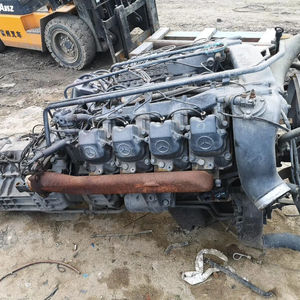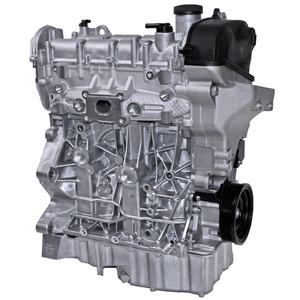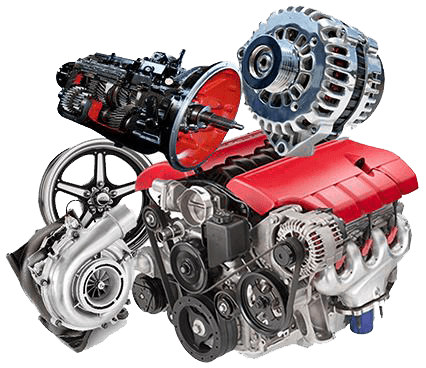Checking Out the Inner Operation of a Compact Vehicle's Engine System
As vehicle drivers, we usually take for provided the elaborate processes that occur within the boundaries of our vehicle's engine system. In this exploration of a portable vehicle's engine system, we will certainly unravel the internal functions of this mechanical symphony, dropping light on the mysteries that drive us onward on our day-to-day trips.
Burning Refine Overview
The combustion process in a portable vehicle's engine system is a crucial device that successfully converts gas into energy to power the lorry. This process takes place within the burning chamber of the engine, where gas and air mix, stir up, and produce controlled explosions. The burning process contains 4 major stages: consumption, exhaust, power, and compression.
Throughout the consumption phase, the piston moves downward, attracting a mix of air and fuel right into the burning chamber. The following phase, compression, entails the piston relocating up, pressing the air-fuel mix to boost its strength. Subsequently, in the power stage, the ignition system stirs up the pressed mix, causing a quick expansion of gases that requires the piston back down. This down motion produces the power needed to drive the automobile. In the exhaust phase, the burned gases are gotten rid of from the combustion chamber with the exhaust valve, preparing the chamber for the following cycle. This cyclic combustion process is essential to the procedure of a portable lorry's engine system, guaranteeing reliable power conversion for propulsion.
Piston and Cyndrical Tube Interaction

The piston's specific fit within the cyndrical tube is necessary for keeping ideal compression and avoiding energy loss throughout burning. Tight clearances between the piston and cylinder walls guarantee reliable sealing, allowing the piston to relocate smoothly without permitting gases to leakage past. Proper lubrication is also crucial to decrease friction and wear in between these parts, enhancing long life and performance.
Additionally, the style and products made use of in manufacturing the piston and cyndrical tube effect engine efficiency and longevity. Modern engines frequently utilize lightweight yet resilient products like aluminum alloys for pistons and cylinder liners to minimize inertia and enhance thermal efficiency. Generally, the unified communication between the piston and cylinder is fundamental to the engine's capability and general performance.
Fuel Injection System Functionality
Fuel injection systems in portable lorry engines play an important duty in precisely supplying fuel to the combustion chamber for effective and regulated ignition. The fuel shot system works by injecting fuel into the combustion chamber at the ideal minute during the engine's operation (opel corsa engine). This specific timing ensures that the fuel mixes evenly with the air for correct burning, causing boosted fuel efficiency and decreased exhausts
There are largely two sorts of fuel useful content injection systems made use of in compact vehicle engines: port gas injection (PFI) and direct fuel shot (DFI) PFI systems inject gas right into the consumption port before the intake valve, while DFI systems infuse fuel straight into the combustion chamber. Both systems have their benefits, with DFI supplying better fuel atomization and PFI giving an extra affordable service.
Comprehending Engine Air Conditioning Devices
Reliable operation of a portable lorry's engine relies greatly on the performance of its cooling systems. Engine cooling is vital to prevent overheating, which can bring about serious damages and lowered efficiency. The cooling system in a compact automobile typically includes a number of parts collaborating to control the engine temperature. One vital part is the radiator, which utilizes coolant to absorb warm from the engine. As the hot coolant moves with the radiator, it releases heat into the air, cooling before returning to the engine. The water pump flows the coolant through the engine and radiator, guaranteeing a consistent flow to regulate temperature level. Furthermore, the thermostat assists control the coolant flow to keep optimal engine temperature. Some automobiles also have cooling down followers that turn on when additional air conditioning is required, such as during hefty web traffic or heat. Recognizing these engine Continued air conditioning mechanisms is important for keeping the efficiency and longevity of a compact lorry's engine system.

Exhaust System Elements Explained
The ideal performance of a compact automobile's engine air conditioning systems relies on a corresponding system recognized as the exhaust system, which comprises various important components for making certain reliable exhausts and engine efficiency. The exhaust system includes parts such as the exhaust manifold, catalytic converter, muffler, and tailpipe. The exhaust manifold gathers exhaust gases from the engine's routes and cylinders them to the catalytic converter. The catalytic converter after that transforms harmful pollutants in the exhaust right into much less damaging exhausts before releasing them through the muffler and tailpipe.
One vital part of the exhaust system is the oxygen sensing unit, which keeps an eye on the oxygen levels in the exhaust gases to help control gas usage and make certain optimum engine performance. opel corsa engine. In addition, the resonator might exist in some exhaust systems to lower sound degrees. On the whole, the exhaust system plays an essential duty in maintaining engine effectiveness, reducing dangerous discharges, and ensuring a quieter driving experience for small vehicle owners

Final Thought
Finally, the portable vehicle's engine system is a complicated combination of components that collaborate to promote the burning procedure, transform fuel into energy, and remove waste gases. Comprehending the inner operations of the engine system, consisting of the piston and cyndrical tube interaction, fuel shot system, engine air conditioning devices, and exhaust system elements, is important for preserving optimal performance and efficiency of the lorry.
The combustion procedure in a portable lorry's engine system is an important system that effectively transforms gas into power to power the vehicle.Fuel shot systems in small lorry important link engines play an important function in precisely delivering gas to the combustion chamber for effective and regulated ignition.There are largely two types of fuel shot systems utilized in portable vehicle engines: port gas shot (PFI) and direct fuel injection (DFI) Comprehending these engine air conditioning systems is essential for maintaining the performance and durability of a portable vehicle's engine system.
The optimal performance of a small car's engine air conditioning mechanisms depends on a complementary system understood as the exhaust system, which comprises various necessary elements for making sure reliable discharges and engine performance.
Comments on “Opel Corsa Engine: Performance and Dependability for Your Car”